This page contains affiliate links. If you make a purchase, Habitot will receive a small commission at no extra cost to you. Thank you!
Children ages 10 to 24 months delight in playing with water! This week, we offer these water-based art and sensory activities using materials you have around your home. Water play helps children build gross motor skills (lifting, pouring, carrying, running, and splashing), fine motor skills (squeezing a sponge and holding a paintbrush), coordination, and physical fitness.
(Safety Reminder: For this age group, parents and caregivers should always be with the child to prevent accidents and injuries.)
What We’re Learning & Skills We’re Building
- Cause and effect – Paper, fabric, and other materials change in texture and form when dampened with water
- Motor skills – Grasping or holding a paintbrush, making marks with it or with the fingers, gripping, scooping, lifting, and pouring
- Early science skills – Learning about the properties of water and how it flows
- Language skills (listening and speaking) – learning descriptive words and phrases
- Sensory skills – Observing, touching, and feeling
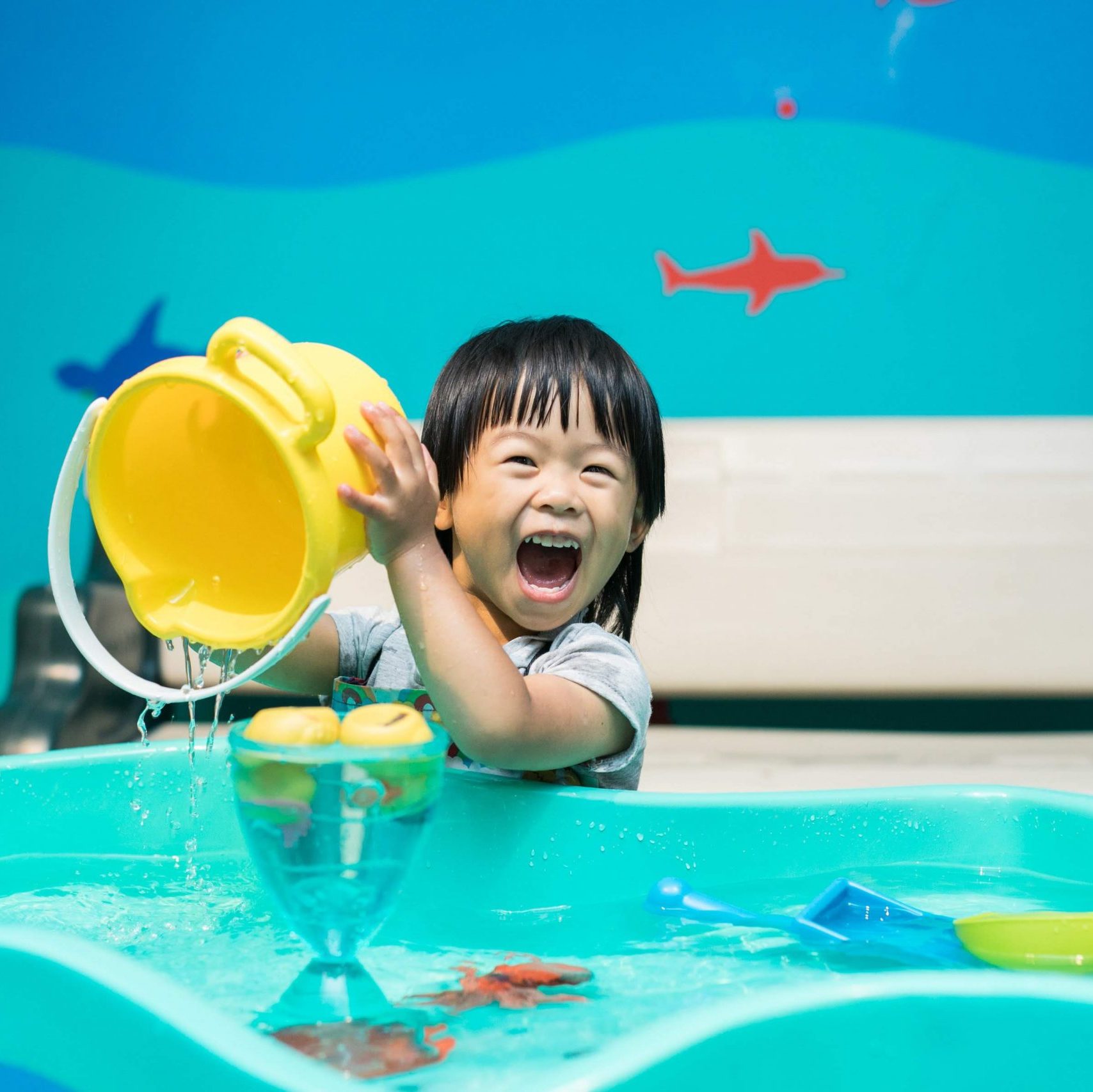
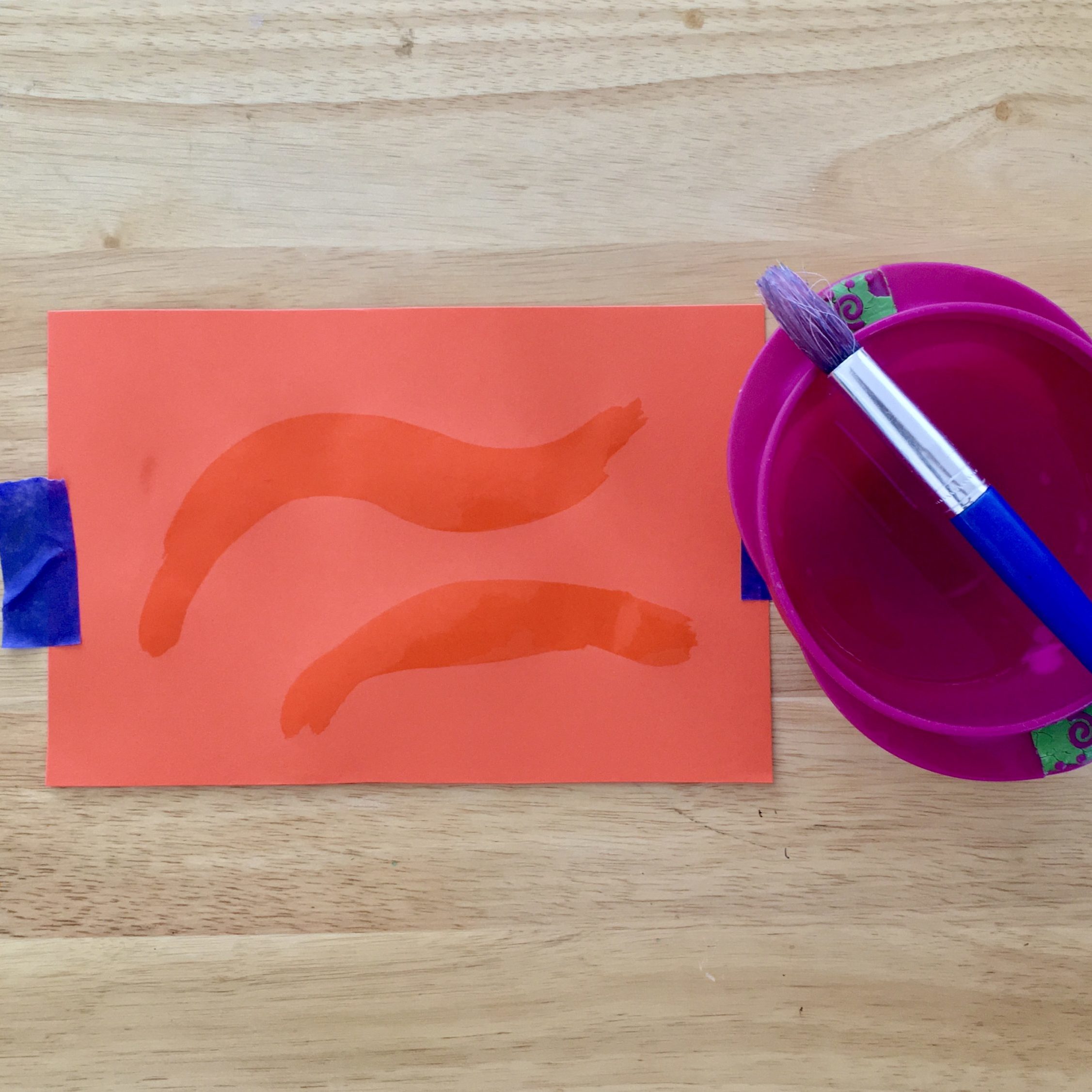
Painting with Water
Materials
- Small plastic bowl
- ½ cup water or more (cold or room temperature)
- Chubby-handle paintbrush or sponge-tip paintbrush (sold at hardware and paint stores)
- Different colors of construction paper (5” x 7” or larger)
- Towel
Optional Materials
- Duct tape
- Painting roller
- Outside wooden fence or stucco wall
- Small sponges
- Masking tape
- Large towel or blanket to sit on
Set up
Your infant or toddler can enjoy water play in their high chair, on the kitchen floor, on the grass, a sidewalk, a driveway, a patio, or a deck – anywhere it’s safe to use water and simple to clean up!
Painting
- Pour 1/2 cup water into the plastic bowl and set it down next to your child. It might help to secure the bowl with a duct tape loop.
- Place the construction paper in front of your child. If necessary, use masking tape to secure the paper to the play surface.
- Give your child the paintbrush and show them how to dip it into the water.
- Invite them to place the brush on top of the paper. They might not understand what to do next, so model the act of dipping the brush into the water, then making a dot or a brushstroke on the paper.
- Infants who aren’t yet able to hold a paintbrush properly can dip their fingers into the water and then make marks on the paper with them.
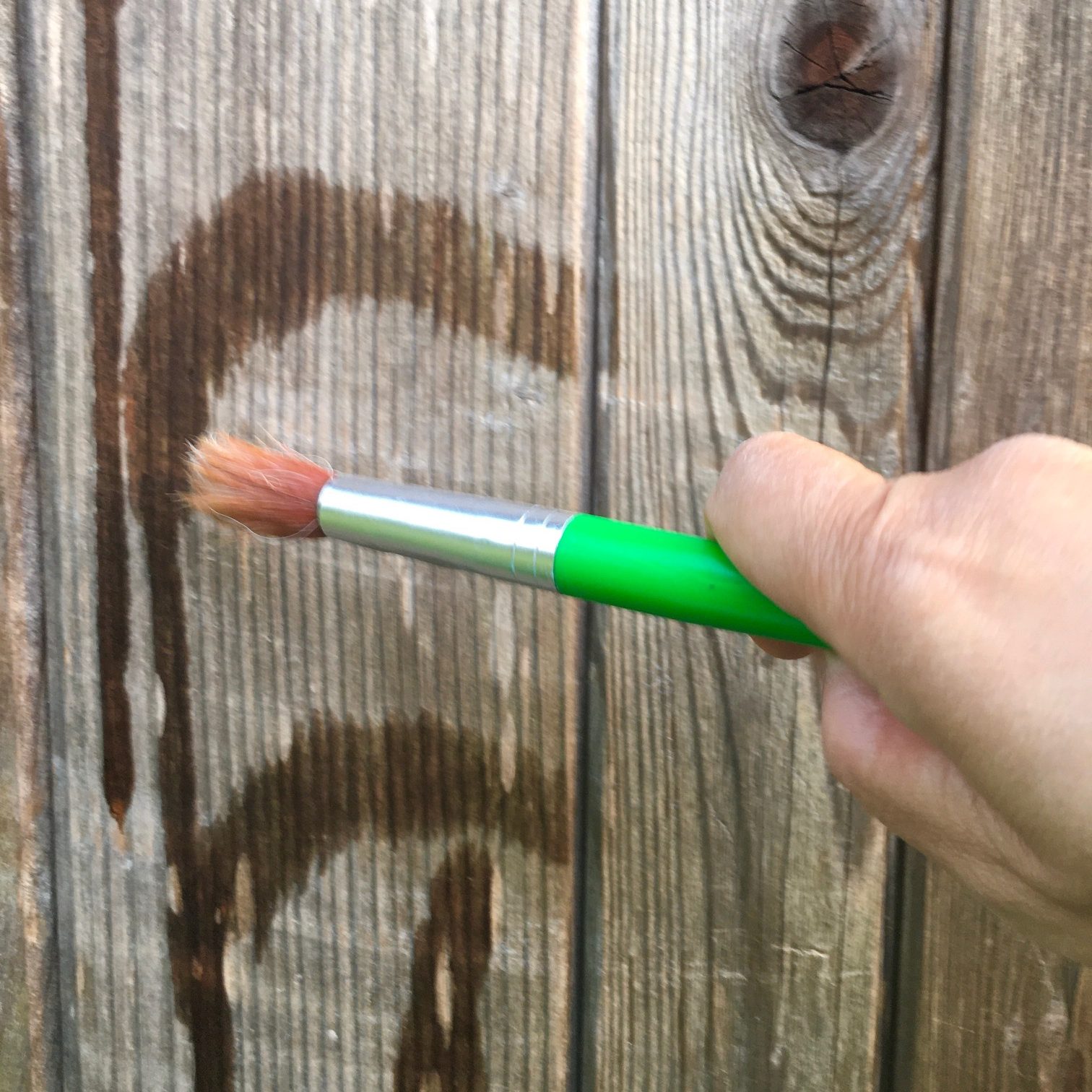
Take Water Play Outside
Using a paintbrush, a roller, or a sponge along with a bowl or a bucket full of water, have your child “paint” a wooden fence or a stucco wall. They can also paint a sidewalk, a driveway, a patio, or a deck. They can dip their hands and feet into the water to make handprints and footprints. Painting outside on a hot day can be especially fun! Watch how the water strokes disappear in the sun and heat. Make sure the ground’s not too hot for your child’s hands and feet.
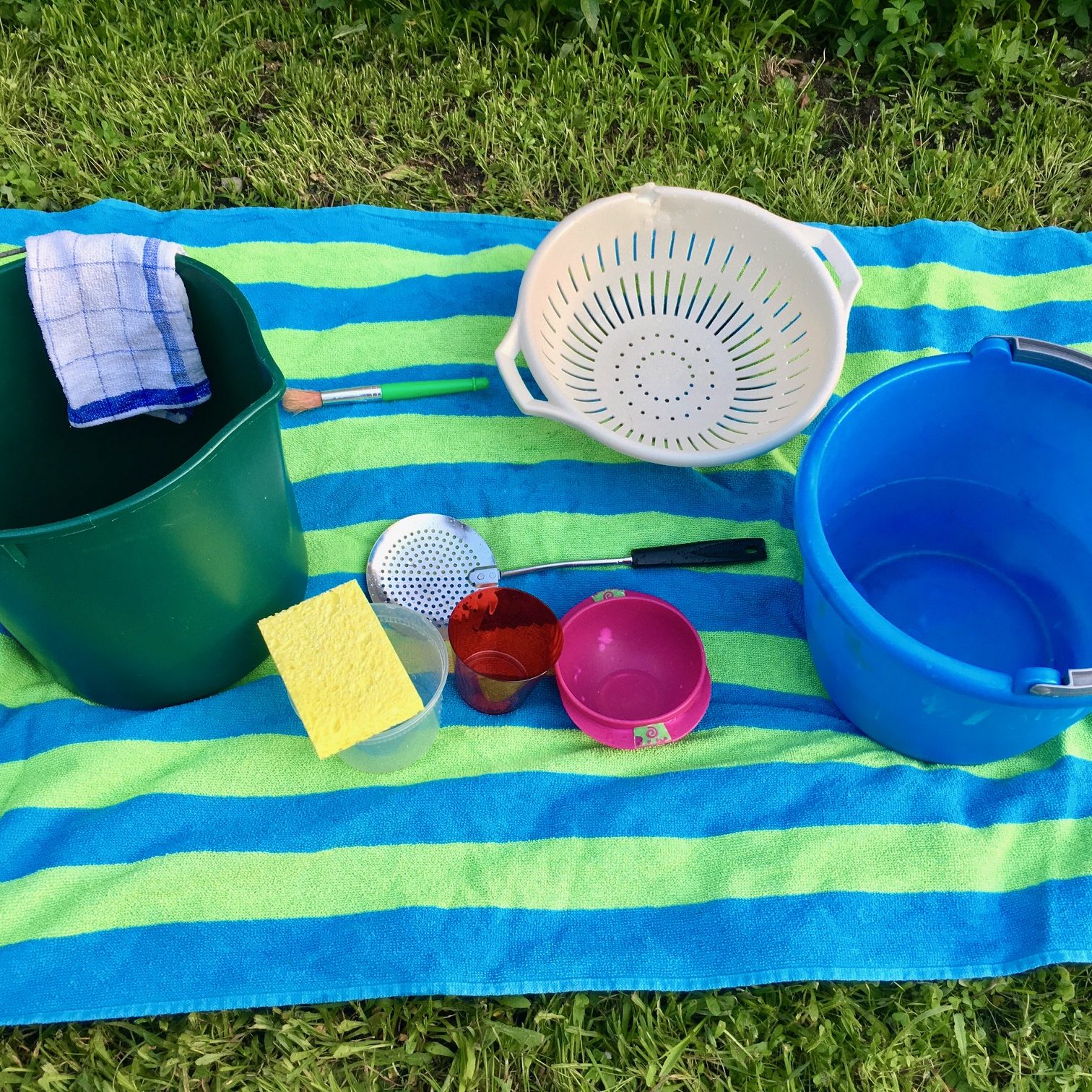
Filling & Pouring Water
Materials
- Wash basin, small tub, large metal or plastic bowls, large pots, small buckets, plastic measuring cups with handles, plastic cups, or used yogurt containers
- Funnels
- Small ladles
- Towels, washcloths
- Bath toys or other water-safe toys/objects
- Sponges
Optional Materials
- Non-toxic, washable watercolor paint or food coloring
- Colander
- Sand and water wheel
Set up & Play
It’s best to do big water play either outside or in the bathtub. Be prepared with extra towels! Fill one large container with water. Keep the other containers empty.
Invite your child to scoop up water using smaller containers, cups, and ladles, then pour the water from those containers into other containers, then back again into the original ones. Expect lots of splashing! Use the funnel and the colander to pour water in different ways, and observe the drips. When your child dips sponges into the water and squeezes them out, it out builds strong hands. Let your child lead the play!
Water Words & Phrases to Build Your Child’s Early Literacy
- This bowl is full. This bowl is empty.
- Can you pour water from the bowl that’s full into the bowl that’s empty?
- You’re squeezing the water out.
- Let’s use the funnel. See the holes in the colander. This is a ladle.
- This toy is floating. This toy is sinking. Watch how it sinks to the bottom. Can we see which other toys sink to the bottom of the bowl? Which ones float? Let’s see what happens with this toy.
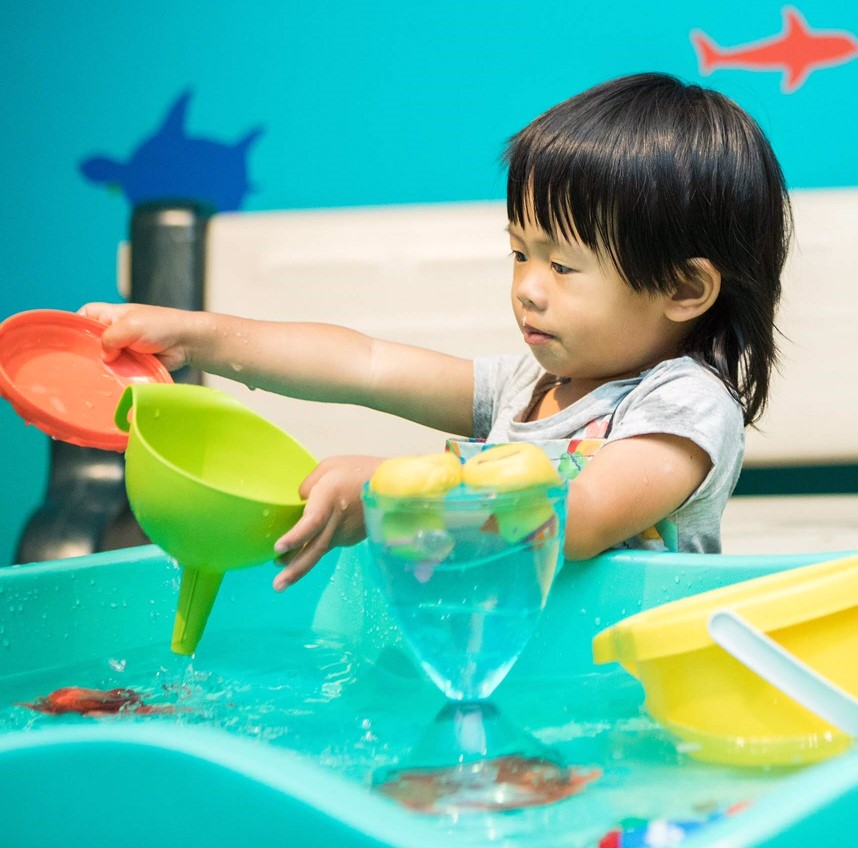
More Fun Ideas
Set up a toy car wash or a baby doll bath. You can add food coloring or non-toxic washable watercolor to the water and experiment with color mixing. Add baby-safe sudsy soap to the water for bubbly fun!
Water Play for Older Children
For older preschoolers and elementary-school-age children, see our Sink, Float, or Change activity for a more advanced experimentation.

